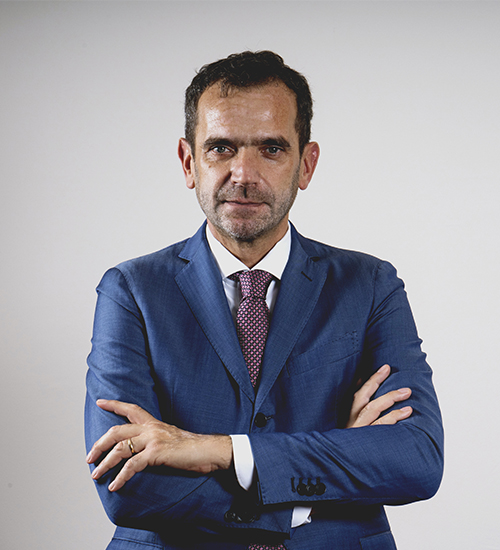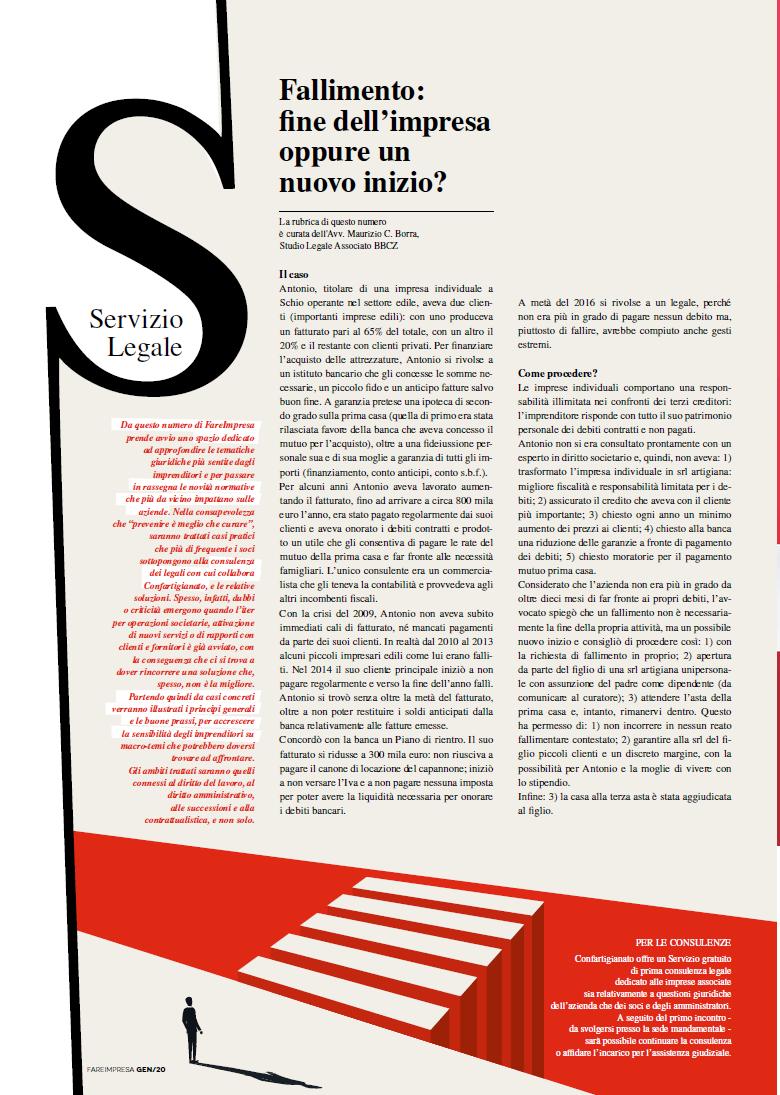


From “Fare Impresa”, January 2020
Column curated by Attorney Maurizio Camillo Borra
THE CASE
Antonio, the owner of a sole proprietorship in Schio operating in the construction sector, had two major clients (large construction companies): one accounted for 65% of his total revenue, another for 20%, and the remaining share came from private clients.
To finance the purchase of equipment, Antonio turned to a bank, which granted him the necessary funds, a small overdraft facility, and an invoice advance subject to final collection. As collateral, the bank required a second-degree mortgage on his primary residence (the first-degree mortgage was held by the bank that had granted his home loan), as well as a personal guarantee from both him and his wife, covering all amounts (loan, advance account, invoice advance).
For several years, Antonio grew his business, increasing his revenue to approximately €800,000 per year. He was regularly paid by his clients, honored his debts, and generated a profit that allowed him to pay the mortgage on his home and cover his family’s living expenses.
His only advisor was an accountant, who handled his bookkeeping and tax obligations.
During the 2009 financial crisis, Antonio did not experience an immediate decline in revenue or payment delays from clients. However, between 2010 and 2013, several small contractors in his industry went bankrupt.
In 2014, his largest client began delaying payments and eventually declared bankruptcy by the end of the year.
Antonio suddenly lost over half of his revenue and could not repay the bank for advances on issued invoices.
He negotiated a repayment plan with the bank, but his revenue dropped to €300,000, making it impossible to afford his warehouse lease.
He stopped paying VAT and taxes to maintain liquidity for repaying bank debts.
By mid-2016, he sought my assistance, as he could no longer meet any financial obligations and was contemplating extreme actions rather than facing bankruptcy.
THE PROBLEMS
A sole proprietorship carries unlimited liability towards creditors, meaning the business owner is personally responsible for all outstanding debts.
Antonio had not consulted a corporate law expert in time, and therefore, he had not:
Converted his sole proprietorship into an artisan limited liability company (Srl Artigiana), which would have provided better tax treatment and limited liability for debts.
Insured the receivables owed by his most important client.
Gradually increased his prices over the years to keep up with rising costs.
Negotiated with the bank to reduce guarantees as debts were paid down.
Requested a mortgage payment moratorium on his primary residence.
THE SOLUTION
Since the company had been unable to meet its debts for over ten months, I explained that bankruptcy is not the end of a business but a new beginning. I advised Antonio to:
File for voluntary bankruptcy.
Have his son establish a single-member artisan Srl, hiring Antonio as an employee (to be disclosed to the bankruptcy trustee).
Remain in his home until it was auctioned.
THE OUTCOME
No bankruptcy offenses were charged against Antonio.
His son’s Srl secured small clients and achieved a decent profit margin.
Antonio and his wife now live on a stable salary.
At the third auction, the house was purchased by their son.


The Covid-19 health emergency has transformed the economic situation into what observers consider the worst financial crisis of the last two centuries. The global scenario, from both a production and financial perspective, has the dynamics of a…
Read more
Even a small entrepreneur, a farmer, a professional, or a private individual can now face financial difficulties in a dignified and effective manner when unable to meet their commitments. We help them escape a debt burden that would otherwise…
Read more
Our specialization in European regulations related to the production and commercialization of medical devices is the result of extensive experience in this sector, which began in 1995. Today, we are experts in the field and, through our comprehensive…
Read more